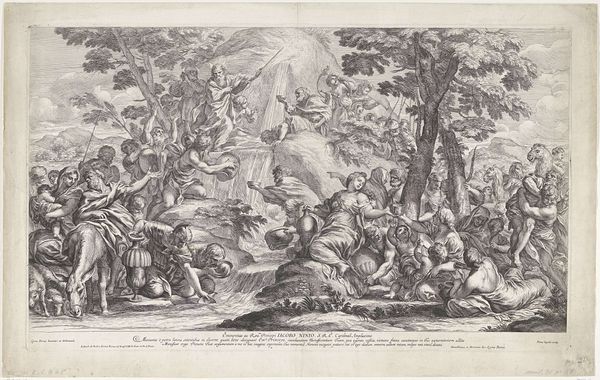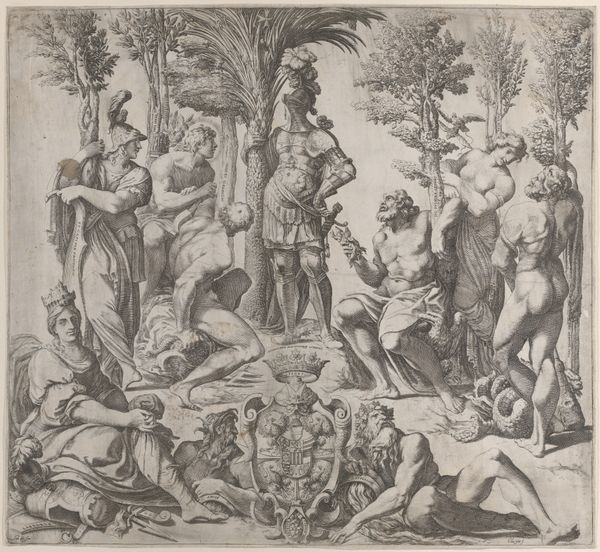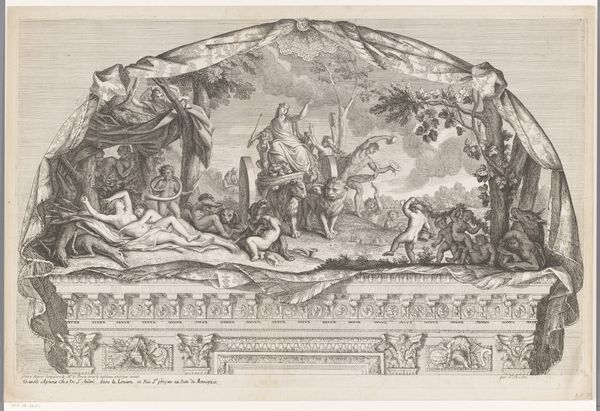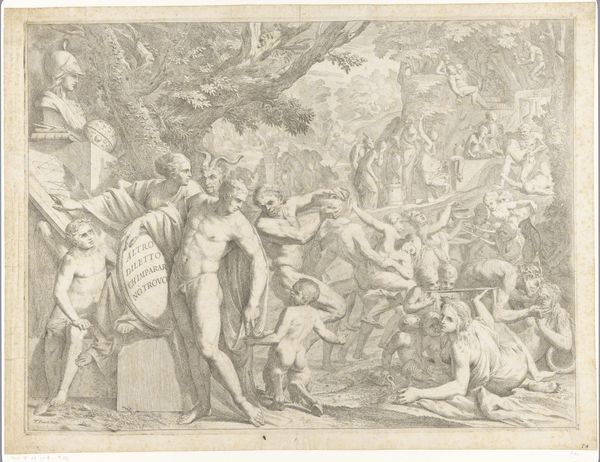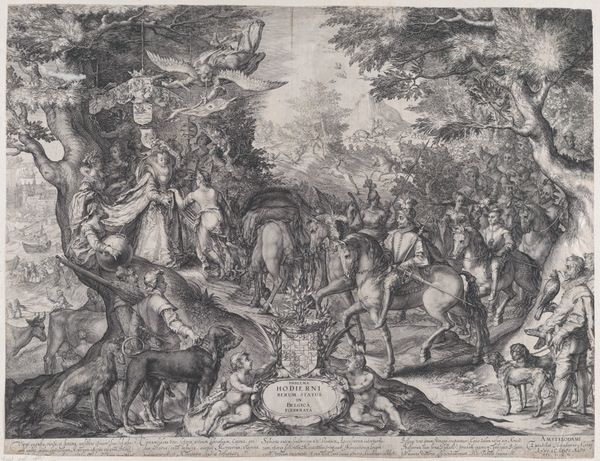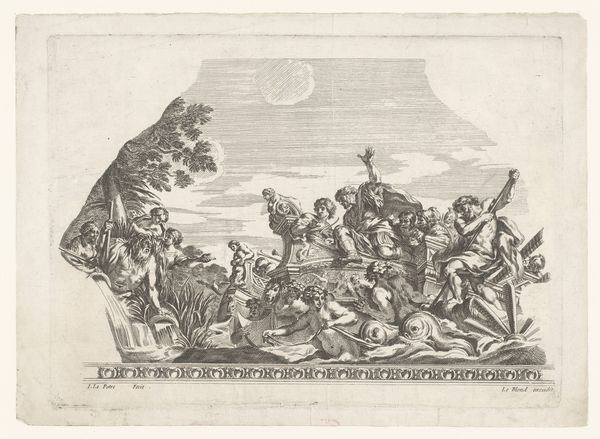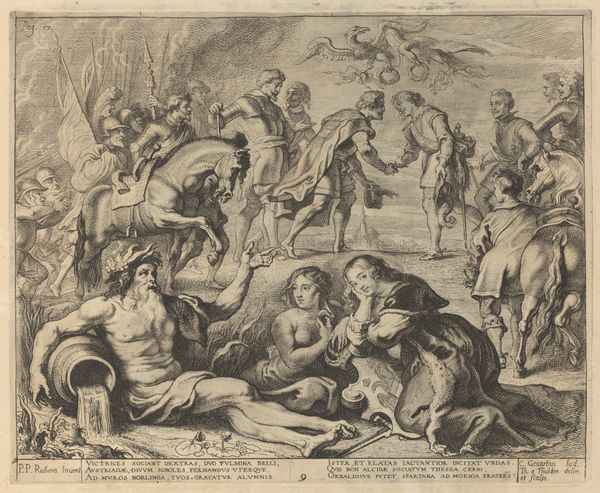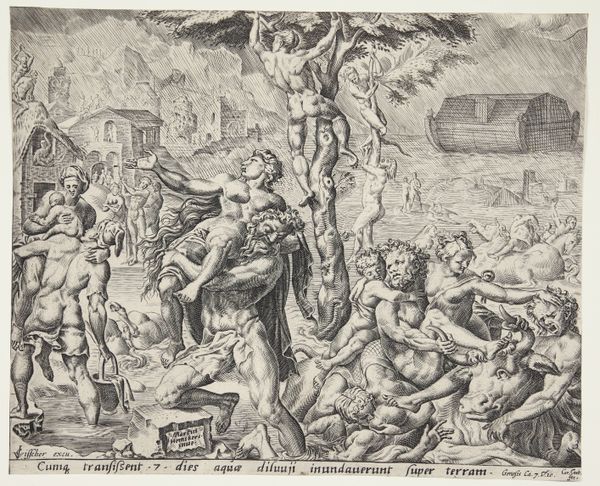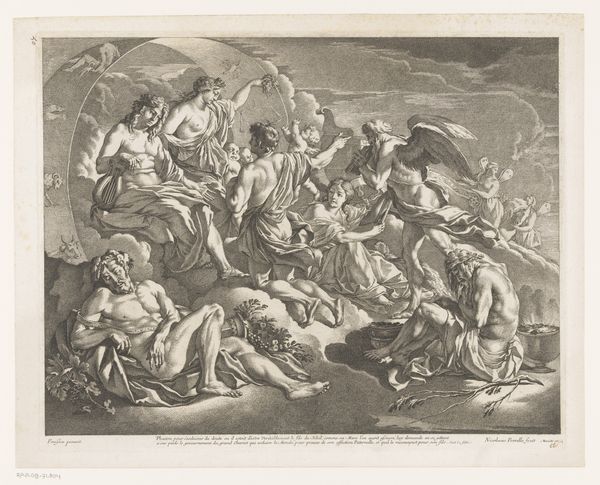
An allegory of painting, who as a child in the centre left draws on a tablet, surrounded by figures, many of whom are drawing 1600 - 1650
0:00
0:00
drawing, print, engraving
#
drawing
#
allegory
# print
#
figuration
#
line
#
history-painting
#
italian-renaissance
#
engraving
Dimensions: sheet: 12 15/16 x 11 1/4 in. (32.9 x 28.6 cm)
Copyright: Public Domain
Editor: This engraving, "An Allegory of Painting," made sometime between 1600 and 1650 by Pietro Testa, has so much going on. The whole composition feels incredibly dynamic. I'm curious about the story it’s trying to tell. How do you interpret this work? Curator: Indeed, it’s densely packed with symbolism. I see a meditation on the nature of art itself. Notice the child drawing—an obvious representation of nascent creativity. Consider who surrounds him. Do these figures reference painting, imitation and skill? This child is drawing the nature which is always around them but only certain figures surround and mentor them. It appears only some artists learn through natural skill while others must depend on tradition. What is carried in cultural memory and tradition, you see, is also skill with which they can depict. Editor: I hadn't thought of the figures surrounding the child as representing artistic lineage and that idea of nature and tradition being a skill. Curator: Testa uses the trope to examine where artistry comes from and is handed down.. Where do ideas come from in any artistic era and tradition? How have depictions of creativity evolved, and what underlying messages are embedded in those images? Think of how the figures interact. The transfer of knowledge isn't passive; they are gesturing to a long past through naturalistic observation and a visual form. Editor: That makes so much sense now. It’s a beautiful reflection on what defines artistry. Curator: Indeed. A lineage of representation! And Testa acknowledges its complex construction in allegory, but always keeping some connection to nature as is, around him and us.
Comments
No comments
Be the first to comment and join the conversation on the ultimate creative platform.

